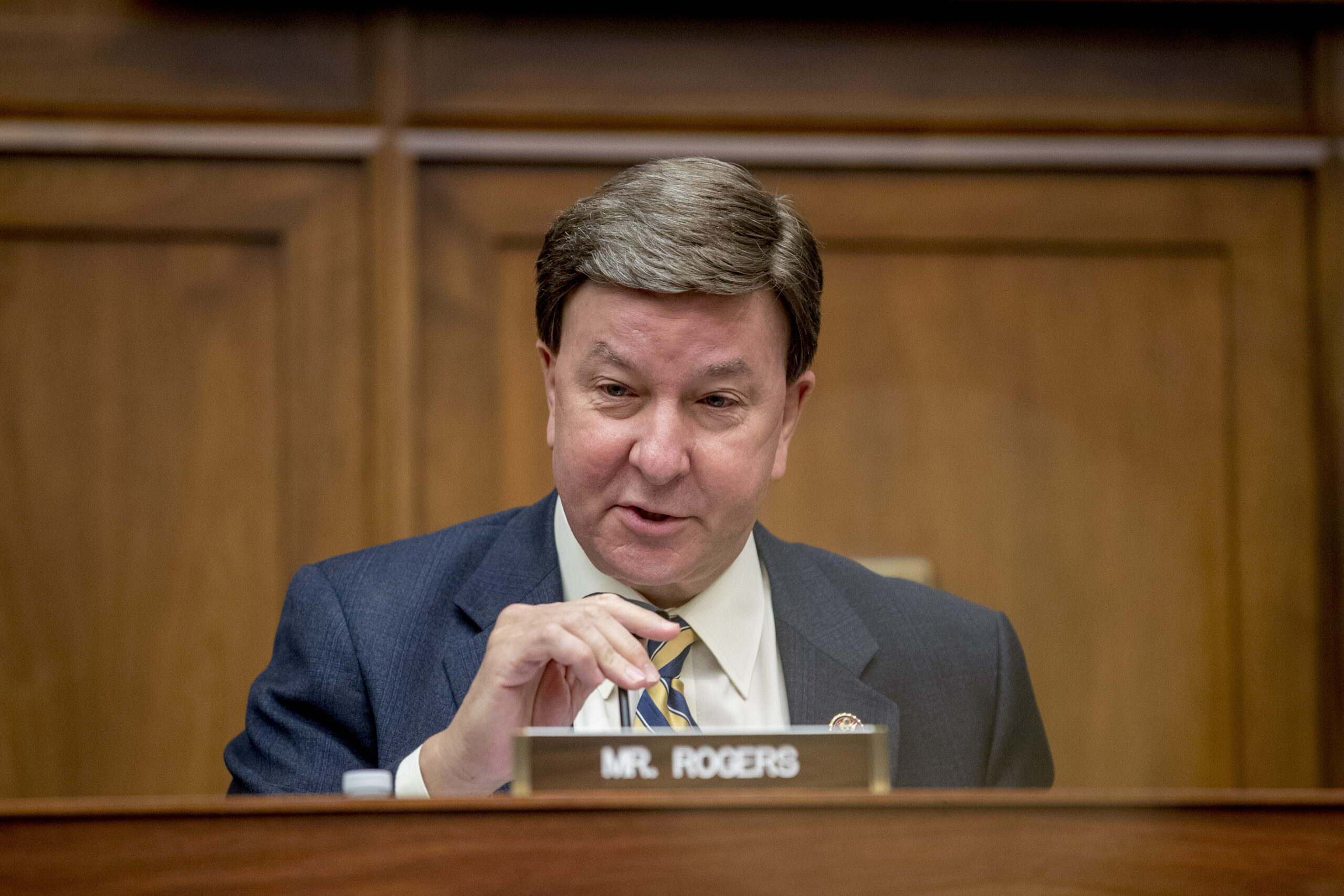
Rep. Mike Rogers, a Republican from Alabama, has guided a major increase in the defense budget through the HASC. (Andrew Harnik/AP Photo/Bloomberg via Getty Images
WASHINGTON: Members of the House Armed Services Committee have voted for a $23.9 billion increase in the defense budget request, in a move likely to receive pushback from progressive members of President Joe Biden’s party.
The vote, which saw 14 Democrats join with the committee’s Republican block, was a victory for Rep. Mike Rogers, R-Ala., the top Republican on the committee and the amendment’s sponsor.
“The bipartisan adoption of my amendment sends a clear signal: the President’s budget submission was wholly inadequate to keep pace with a rising China and a re-emerging Russia,” Rogers said in a statement. “I hope this bipartisan, and now bicameral, move is understood by the Biden-Harris administration. The defense of our nation will not be shortchanged by Congress. I thank my colleagues for adopting this amendment to support the men and women who serve in our armed forces.”
The topline increases include:
- Procurement: $9.8 billion
- RDT&E: $5.2 billion
- Innovation: $4.2 billion
- Construction and facility improvements: $3.8 billion
- Operation and maintenance: $3 billion
- National Guard and Reserve funds: $1.2 billion
- Defense Health Program: $1.1 billion
- Missile defense: $780 million
- Space: $490 million
Rep. Adam Smith, the Washington Democrat who chairs the committee, credited Rogers for working with “the entire committee” on developing the budget increase, but voted against the measure.
“The reason I oppose it is that I really believe that the single most important thing the Defense Department needs to do right now is spend its money wisely,” Smith said ahead of the vote. “Do a better job of acquisition and procurement, do a better job of anticipating what the threats are now versus what they were 30 years ago. And if we give them another $23.9 billion, it takes the pressure off. It makes it easier for them to just keep doing what they’ve been doing. And I think that is the biggest problem.”
“I think what we need is a more rigorous approach to the money we have,” Smith added.
I've got 14 HASC Dems who broke ranks and pushed the $24B NDAA topline boost across the finish line:
Langevin
Courtney
Moutlon
Brown
Vela
Sherrill
Golden
Luria
Kahele
Veasey
Murphy
Horsford
Carbajal
Slotkin— Connor O'Brien (@connorobrienNH) September 1, 2021
As one might expect from almost $24 billion in new money, there are a lot of projects included. Below are a few highlights, per a factsheet put out by Roger’s office:
Ships: The funding prohibits the retirement of three cruisers and adds $1.5 billion for an additional DDG-51, $1.2 billion for an additional LHA, $668 million for an additional TAO Fleet Oiler, $567 million to expand procurement to three Virginia class submarines per year, and $270 million for an additional EPF.
Aircraft: $394 million to buy four additional KC-130Js for the Navy and Marine Corps, $340 million for two additional P-8 Poseidon for the Navy, and $212 million for nine additional UH-60 Blackhawks for the Army National Guard.
Combat vehicles: $234 million for Abrams tank upgrades, $183 million for HMMWV Modifications, $139 million for Stryker upgrades, and $120 million for Joint Light Tactical Vehicles.
The addition also covers $350 million more for missiles and $553 to strengthen cybersecurity priorities.
The increase is no done deal, as it still has to go through the budget reconciliation process, and find support in the Appropriations committees – those who control the purse strings. But for those who argue the Pentagon needs a 3 to 5 percent increase year over year to stay ahead of China and Russia, the HASC vote was a big win.





















